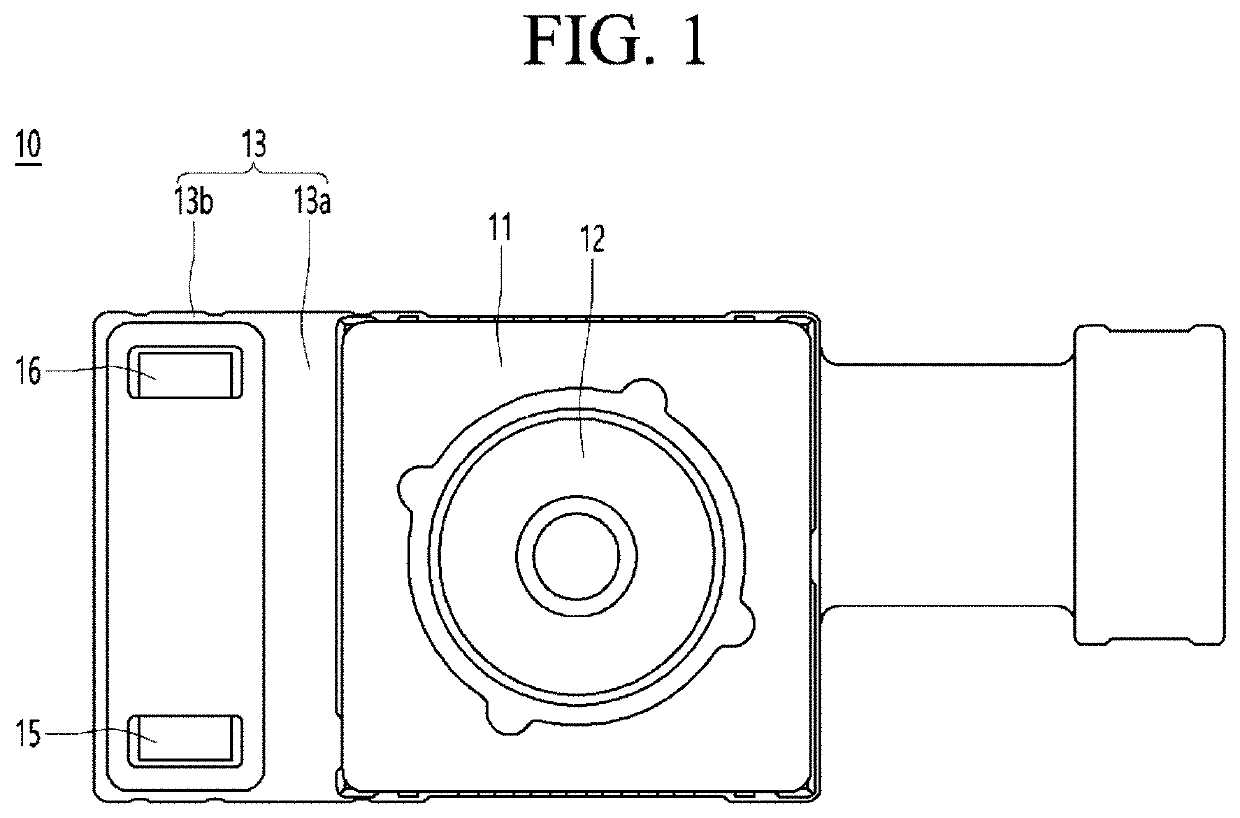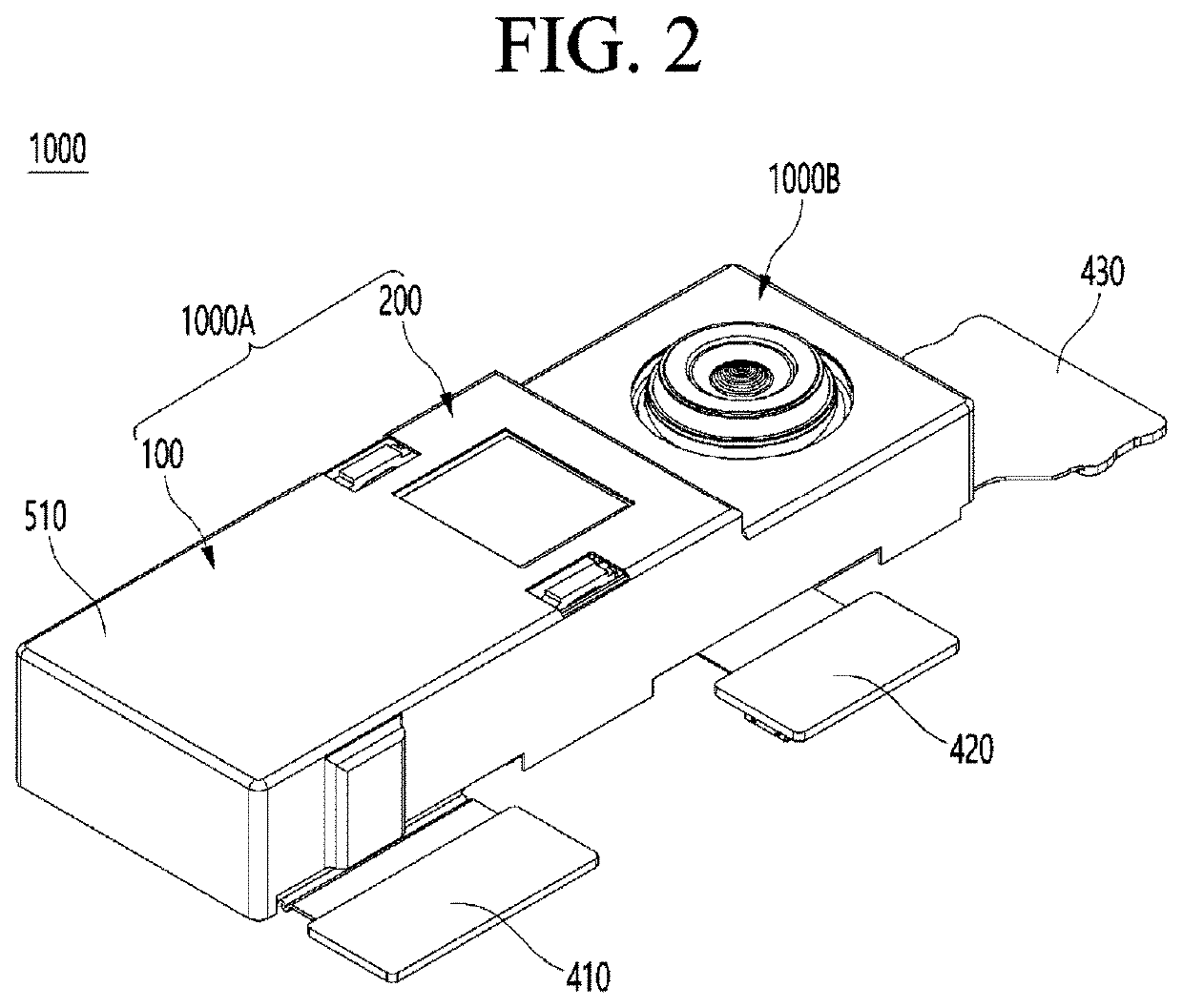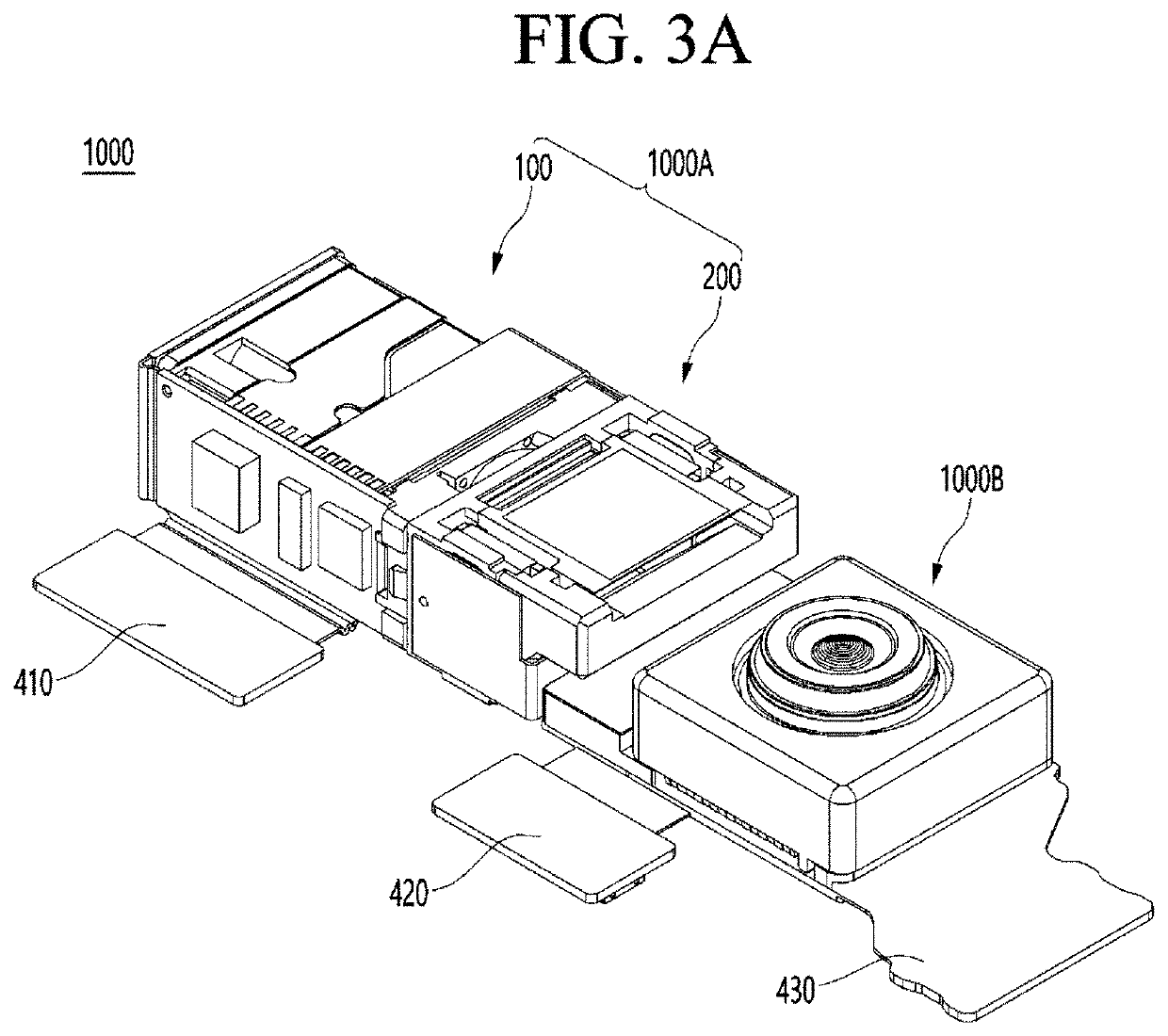Camera actuator and camera module comprising same
a technology of camera actuator and camera module, which is applied in the direction of camera focusing arrangement, printers, instruments, etc., can solve the problems of low power consumption, low cost, and image shake caused by camera shake that occurs more seriously while a shutter speed is slower, so as to prevent magnetic field interference, and high data precision
- Summary
- Abstract
- Description
- Claims
- Application Information
AI Technical Summary
Benefits of technology
Problems solved by technology
Method used
Image
Examples
first embodiment
[0151]FIG. 2 is a perspective view showing a camera module 1000 of an embodiment, FIG. 3A is a perspective view of a shield can 510 removed from the camera module 1000 of the embodiment shown in FIG. 2, and FIG. 3B is a plan view of the camera module 1000 of the embodiment shown in FIG. 3A.
[0152]First, referring to FIG. 2, the camera module 1000 according to the embodiment may include a single or a plurality of camera modules. For example, the embodiment may include a first camera module 1000A and a second camera module 1000B. The first camera module 1000A and the second camera module 1000B may be covered by a predetermined shield can 510.
[0153]Referring to FIGS. 2, 3A, and 3B together, in an embodiment, the first camera module 1000A may include a single or a plurality of camera actuators. For example, the first camera module 1000A of the embodiment may include a first camera actuator 100 and a second camera actuator 200.
[0154]The first camera actuator 100 may be electrically connec...
PUM
 Login to View More
Login to View More Abstract
Description
Claims
Application Information
 Login to View More
Login to View More - R&D
- Intellectual Property
- Life Sciences
- Materials
- Tech Scout
- Unparalleled Data Quality
- Higher Quality Content
- 60% Fewer Hallucinations
Browse by: Latest US Patents, China's latest patents, Technical Efficacy Thesaurus, Application Domain, Technology Topic, Popular Technical Reports.
© 2025 PatSnap. All rights reserved.Legal|Privacy policy|Modern Slavery Act Transparency Statement|Sitemap|About US| Contact US: help@patsnap.com



